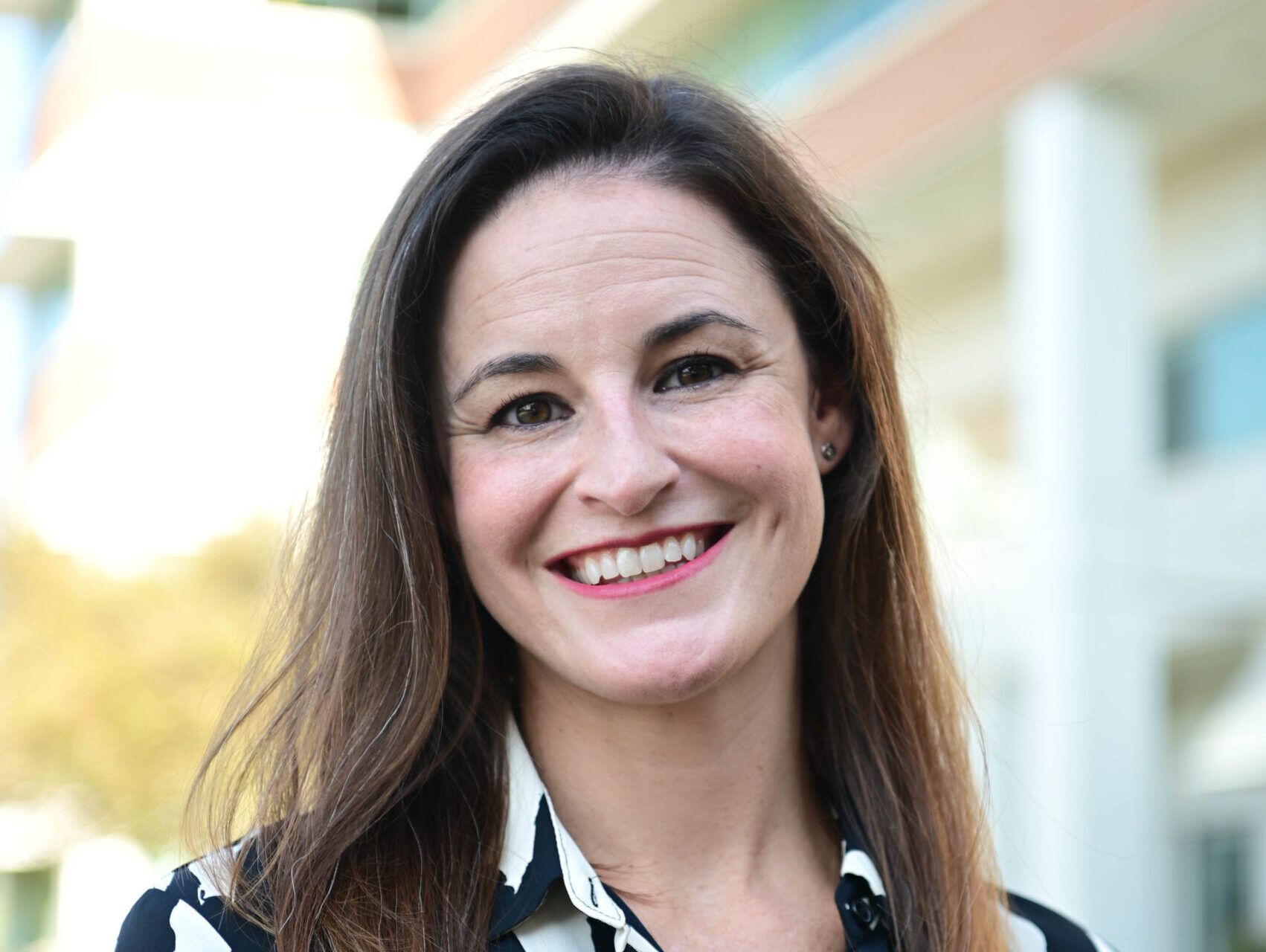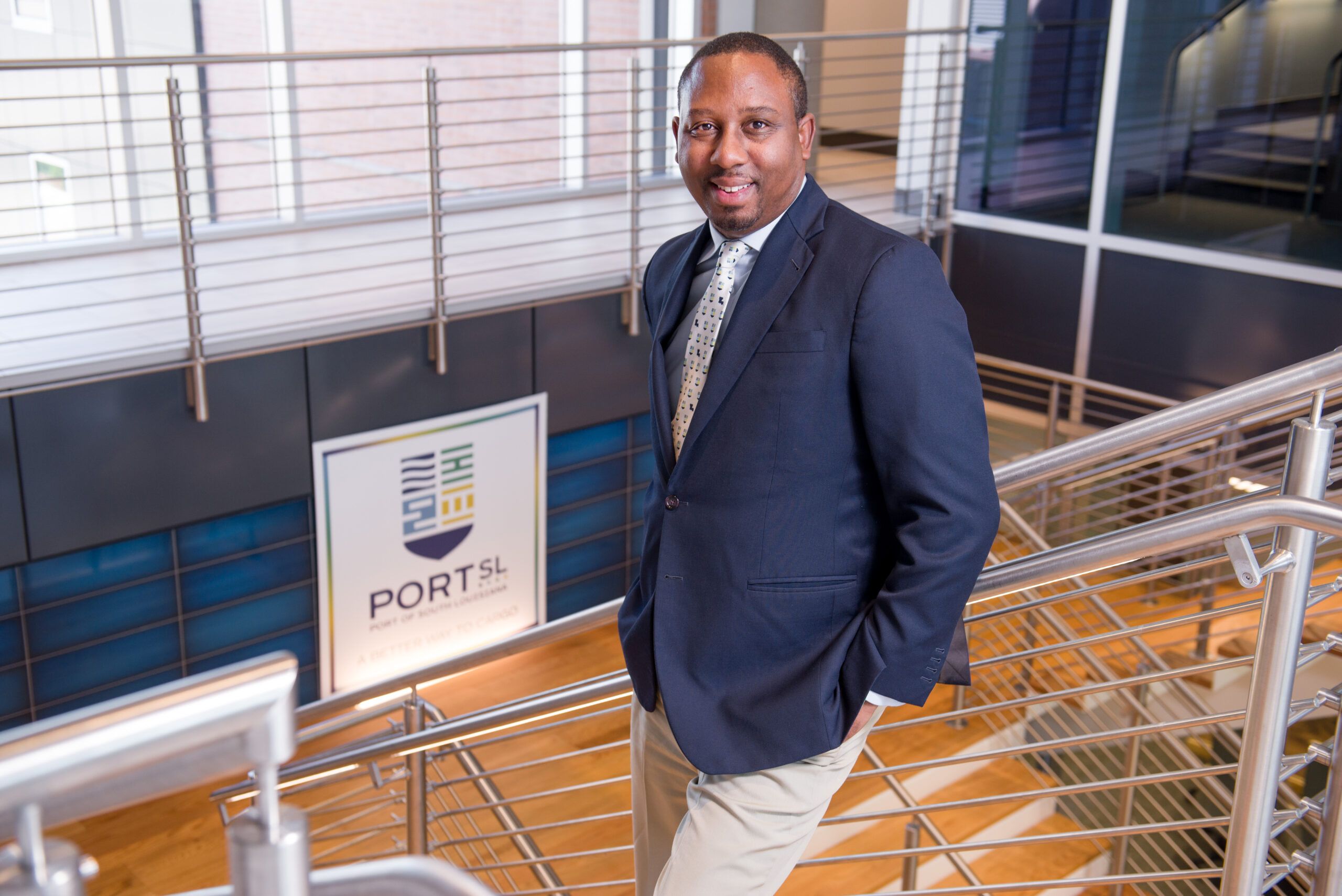In hopes of building a one-of-its-kind clean hydrogen energy cluster in south Louisiana, the multi-pronged H2theFuture initiative is gradually taking shape. Ultimately, all 25 of the universities, economic development agencies and workforce groups coordinating the $75 million effort hope to make Louisiana the epicenter of the hydrogen universe.
H2theFuture was the brainchild of GNO Inc., which pursued and was ultimately awarded a U.S. Economic Development Administration grant as part of its “Build Back Better” challenge in 2022. The $50 million grant was matched with $25 million from the state of Louisiana.
Lacy McManus, executive director of the newly created GNO Inc. entity Future Energy, says all five of H2theFuture’s work streams are making measurable progress, including:
• A research component under the direction of UNO, LSU, ULL and Nichols State University
• A collaborative space at UNO’s Louisiana Wind Energy Hub, managed by Nexus Louisiana
• A business development component managed by GNO Inc. and the Baton Rouge Area Chamber
• A workforce component managed by the Louisiana Community & Technical College System
• A pilot project to construct the nation’s first e-methanol fueling barge at the Port of South Louisiana
McManus joined the team in January to supervise the initiative, along with other efforts in the energy transition space. She is particularly excited about the potential of wind power to create green hydrogen as industrial feedstock. In theory, water from the Gulf of Mexico would be extracted and desalinated, then separated into hydrogen and pure oxygen by an electrolyzer powered by an offshore wind turbine. The hydrogen would then be liquefied and piped to shore for use in the production of ammonia or in other processes.
Nevertheless, new technologies mean little if they aren’t marketable. “We can have all these ambitious goals, but if they don’t align with the balance sheets of our private sector industry partners, they’re not going to fly,” she adds. “It must be an ideal marriage between all the parties for it to truly work.
“That’s what H2theFuture is all about: Getting us to that point of equilibrium between those driving objectives.” To facilitate the process, GNO Inc. recently hired an “innovation consultant” to assess research opportunities in higher education, as well as to gauge the potential of commercializing those outcomes.

Connecting the Dots
A primary goal of H2theFuture is connecting research opportunities with potential investors. As such, the Baton Rouge Area Chamber is spearheading the business development component of H2theFuture by leading a coalition of economic development groups in connecting industry with new technology platforms.
Over the last six months, BRAC has met with other regional economic development agencies from New Orleans to Lake Charles to develop goals and objectives. Each organization designated a point person to participate in the discussions.
“Our first objective has been to take inventory of the companies and workforce that we have here,” says Russell Richardson, BRAC’s senior vice president of business development. “As a multiregional team, we need to use those assets to grow the opportunities in the South Louisiana energy space.”
Britt Bowker, BRAC’s director of recruitment, sees the initiative as an opportunity to attract more state investment in the process. “We have a readily available workforce and have training programs in place that can ensure that their skills are transferable,” she adds. “We are creating a narrative to show what Louisiana is capable of doing.”
At the end of the day, BRAC’s overarching objective is to help companies achieve their individual goals to decarbonize, while also creating new jobs and investments.
“Our role is to link industry together with these platforms and help them map out their strategies for achieving net zero,” says Adam Knapp, BRAC’s president and CEO. “It also positions us as a global leader for jobs in this industry.”
Of course, investment means little if Louisiana workers can’t do the work. As such, H2theFuture’s eight participating community colleges are collaborating to identify needs and objectives for a hydrogen future in Louisiana.
Some results are already coming to fruition—River Parishes Community College in Gonzales is seeking to update its process technology curriculum to address a new hydrogen future, and Nunez Community College in Chalmette plans to add a wind turbine technician curriculum in Q1 2024.
Enabling budding entrepreneurs is another important piece of the puzzle, says Rodney Sampson, chairman and CEO of Opportunity Hub and a Tulane University alumnus. His Atlanta-based group has expanded its accelerator operations to New Orleans through H2theFuture, focusing on start-ups and entrepreneurs in the energy space.
OHUB builds technology startup ecosystems from the ground up. “Depending on the city, market or region, we execute a place making and programming approach at the request of our respected partners,” Sampson says. “We focus on the innovation of new company start-ups, as well as the development of workforce at the local level. The goal is to build a strong community, or ecosystem, around the innovation.”
OHUB sponsors monthly events that bring together new energy or climate tech entrepreneurs, as well as potential investors. “We also offer a four-month program where we provide detailed training to 50 companies looking to take their ideas to market,” Sampson says. “The goal is to help founders get their products built out, to fine-tune their pitch in order to raise capital or to get customers.”
The first such program was held in early October at Dillard University in New Orleans. From those 50 companies, OHUB will select five finalists to receive from $50,000 to $100,000 in seed money, with the winners announced during New Orleans Entrepreneur Week March 11-16, 2024.
For them to be successful, however, more money will be needed. “OHUB is doing the early work,” Sampson says. “We really want venture capitalists in the region to help with the rest. That’s why I think the partnership with GNO is so critical to our program. They’ll help with making these introductions to other companies or organizations.”
A Research Hotbed
Louisiana’s universities are currently positioning themselves as hubs of decarbonization research, whether in hydrogen, CCUS or renewable fuels. Some of that had been made possible through H2theFuture funding, while other initiatives are pursuing other funding sources.
LSU’s Cain Department of Chemical Engineering recently received $3 million from the EDA grant to research carbon utilization, as opposed to sequestration. A major aspect of its research will focus on electrolysis in the ethane-to-ethylene conversion process, whereby two electrodes separate a compound into its more basic components.
And while not directly related to H2theFuture, an LSU-led statewide team of universities, community and technical colleges, agencies and industry—dubbed the Engine for Louisiana Innovation and Transition of Energy (ELITE)—in June was named one of five finalists for a $160 million National Science Foundation grant to support energy transition and decarbonization through technology and talent development across Louisiana’s industrial corridor.
Additionally, Louisiana, Arkansas and Oklahoma formed a regional partnership in 2022— the HALO Hydrogen Hub—to compete for $7 billion in Infrastructure Investment and Jobs Act funding through the U.S. Department of Energy. Should they receive the funding, the three-state group plans to employ public-private partnerships to develop an extensive hydrogen network that will ultimately be integrated into a national network.
Through the HALO initiative, the University of Louisiana at Lafayette would lead an effort to create economic benefits for disadvantaged communities. Dr. Ramesh Kolluru, vice president of research, innovation and economic development at UL Lafayette, says HALO intends to conscientiously attract and build an ecosystem of producers and consumers.
“HALO is focused on the buildout of that ecosystem across these three states, but we want to do it right,” Kolluru says. “The effort will focus on making sure that wherever projects are implemented, that their benefits are felt by those communities that might have been negatively impacted in the past.”

Through HALO, a network of universities, community colleges, and trade- and community-based organizations across all three states would collaboratively develop innovations to fuel the next generation of hydrogen economies and technologies, while also developing a workforce within impacted communities.
“It’s an all-hands-on deck kind of an approach to making sure that the right workforce is produced, one that looks like the communities where these projects are located,” Kolluru says.
He says much of the funding would go to the communities where these projects are implemented. “Once we’re awarded, the focus of the world will be on this tri-state region of Arkansas, Louisiana and Oklahoma. That will attract significant additional investment. That’s our hope; that’s our strategy.”
Who will design the E-Methanol Refueling Barge at the Port of South Louisiana?

A pilot project to be funded by H2theFuture—a nearly $7 million e-methanol refueling barge at the Port of South Louisiana—will soon move forward.
In September, the port selected Elliott Bay Design Group in New Orleans to design the barge.
Port CEO Paul Matthews says designs are projected to be completed by March 2024. About $3.4 million in U.S. Economic Development Administration money will help fund the construction, with the state putting up the remaining $3.4 million match.
E-methanol is produced by combining green hydrogen and capture carbon dioxide. The process has the potential to mitigate carbon emissions when used as a fuel. “(The refueling barge) will be the first in the nation and second in the world,” Matthews says. “The market is showing there’s a continued demand for alternative fuel sources as companies try to reduce or eliminate their carbon footprint. When you have this fuel with zero net carbon emissions, it attracts more ships and more activity in the river.”
The barge will be fleeted within the Port of South Louisiana’s jurisdiction and will provide fuel to tugboats and other vessels. Says Matthews: “A landside facility will transfer fuel from a storage facility onto the barge.”
The fuel source remains unknown. “It could come from existing industry source,” he says, “but that will be determined as we go through the process.”








